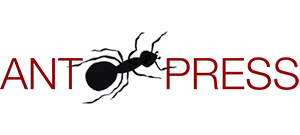We Walked
The River
Ant Press 2021
Hand painted



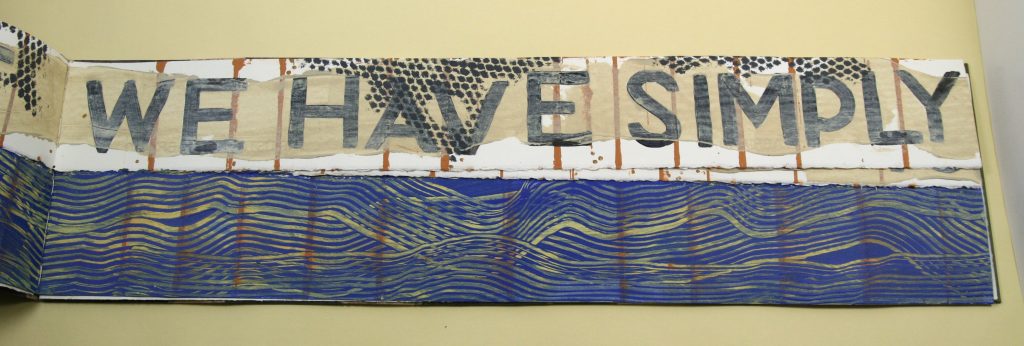


Made during the 5 month COVID-19 pandemic lockdown in Sydney in 2021 this hand painted book has a double text on double pages.
“Is it ridiculous to think that we have simply walked a thousand miles to discover we have returned to where we began.”
“But they say you can never cross the same river twice.”
Stretching to over 80 cm long when closed it is the scale of a walking stride or step. Although I didn’t realise it at the time this was my ‘lockdown book’.
All Human Beings Ant Press, 2019
Printed through Blurb
Related text: The Power of Hope by Kon Karapanagiotidis
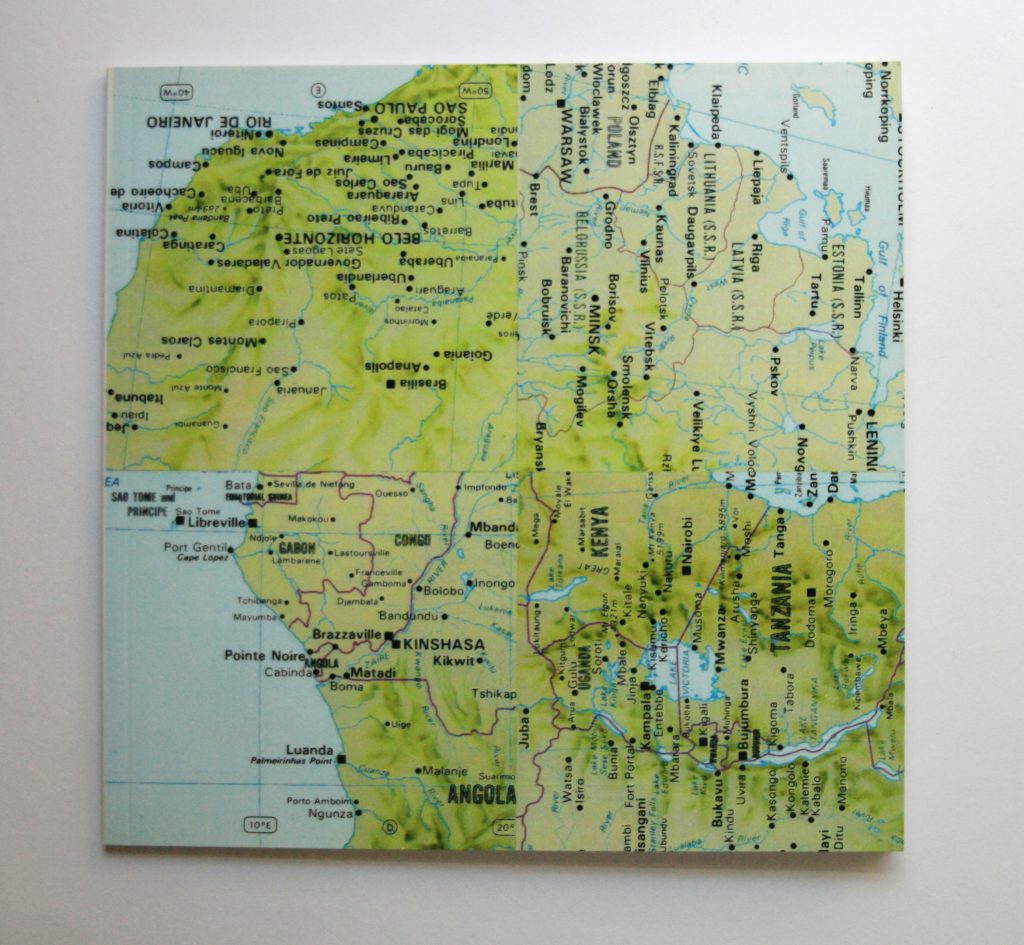
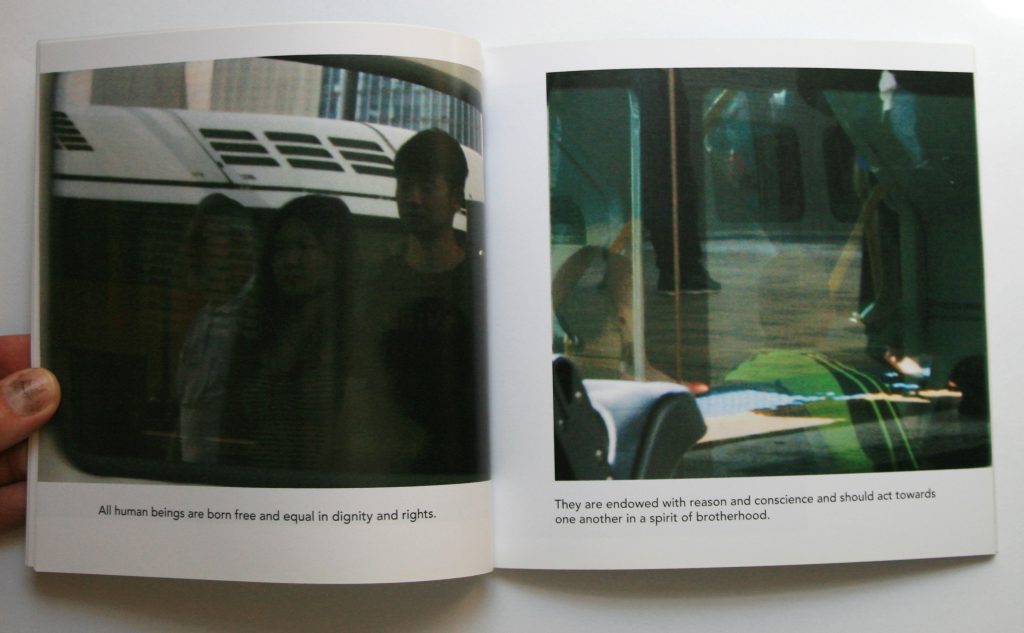
This work, All Human Beings, is a response to The Power of Hope by Kon Karapanagiotidis, founder of the Asylum Seeker Resource Centre in Melbourne. Aside from being a memoir The Power of Hope is also a call to action. Action can take many forms but the beginnings of all action lie within us and the connection of our humanity to the shared humanity of all people. Karapanagiotidis calls us to be more compassionate. It is this aspect of his book that I have picked up on. Recently my attention was drawn back to The Universal Declaration of Human Rights. This document reads as radical in this current era of ‘tribalism’ and rejection and fear of the Other. I have paired pertinent quotes from Karapanagiotidis’ writing with a selection of articles from the Declaration and illustrated the book with photos of people, just random people. They could be you, me, us, them. The photos were taken on Central Station in Sydney. I chose this location because of the randomness of those passing through and because the movement of particular people, asylum seekers, has become such a contentious issue.
Case: ANGEL RYAN Ant Press 2012 (2nd edition)
Texts by Monica Oppen and Grace King (coda text)
Images and ‘fragment poems’ by Peter Lyssiotis
Printed and bound by Print and Distribution Services, University of Wollongong, NSW Australia


The most powerful way to breakdown stereotypes is by asking questions, by keeping discussion alive. Only then can we move towards a new reality. In this book the discussion is about women, feminism, patriarchy, media and the possibility of equality.
In Case: Angel Ryan there is the base layer of images with what could be called fragment poems by Peter Lyssiotis. This is overlayed with new texts and newspaper clippings.
Text 1: the red on black band. I found the images and poems to be very disturbing; violent and yet seductive. I had a sense that Lyssiotis was operating out of a socially accepted norm, not questioning the status quo, that norm being to abuse these anonymous women, after all they were simply images of models from fashion magazines, was okay. I was angered by this lack of self-awareness and cultural awareness. I wrote this text in response.
Text 2: white on black band. This is the story of the murder of Angel Ryan. It is told through fragments, like we tend to experience the news. Fragments of radio broadcast, newspaper articles, people talking on the street and now social networking media. The intention of the story is to link up the base images and personalise them, to suggest that the violence was done against someone.
Text 3: the green blocks in the coda. This text is by Grace King and was posted on tumblr. It has been reprinted with permission. It discusses the impact of patriarchy. King is dealing with the issues of this book from a different point of view.
Dare to VOTE! Ant Press, Sydney 2012
Text compiled by Monica Oppen
Linocuts by Monica Oppen
Printing by Nick Summers at Plum Letterpress from photopolymer plates, lino blocks and wood type on Magnani Velata Avorio paper.



We place a lot of importance on democracy. Yet our system of democracy would not have been recognised by the ancient Greeks as democracy. Is this why some countries seem to fake it? Are we faking it? But would we consider the ancient Greek system democratic? Only a select group of male citizens were allowed to vote. Women and slaves, more than half the adult population, were excluded. Ironically today, with the power of lobby groups and the powerful ‘interests’ of big companies, the voting population feels excluded and voiceless anyway.
Taking the letters of the word D E M O C R A C Y I have hunted out words that reflect the ambiguity and possibility of not only democracy but of governing. The book comes with pencils so that all readers can vote— for or against democracy. If they dare!
This book was made for inclusion in the 2012 exhibition Lessons in History II — Democracy curated by Noreen Grahame at Noreen Grahame Galleries in Brisbane, Australia.
Morning Ant Press 2012
Text by Monica Oppen
Extract from: The Epic of Gilgamesh, Andrew George, Penguin Classics 1999
Text printed by Nick Summers at Plum Letterpress
Images printed as photocopies on tracing paper

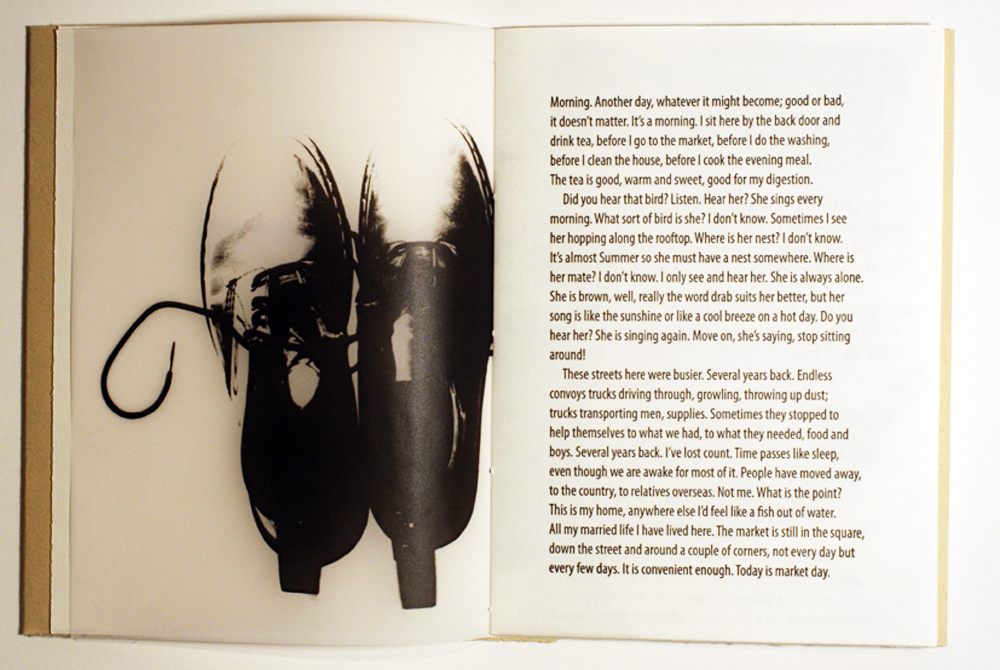
When I think of the Middle East, Iraq, what comes to mind is the ancient civilizations of the Sumerians, Mesopotamians and Assyrians recorded on clay tablets, the oldest written records that we have. The most famous text to come down to us is The Epic of Gilgamesh, the tale of the King of Urak. It is a heroic saga, rich with the lilt of an oral tradition that hints at the antiquity of the story.
When I think of the Middle East, Iraq, what comes to mind is the insane destruction that foreign countries have wreaked over the last decade, breaking down the social fabric of Iraqi society through trade sanctions and war to gain control over the supply of crude oil.
In my book, Morning I have tried to capture the humanity that links us through time. Through the design of the book and the folding of the pages I have overlayed the ancient with the modern.
The passage I have chosen from the epic tells of Gilgamesh’s grief over the death of his friend Enkidu. Gilgamesh’s pain is deep and despairing. He calls all those in his kingdom to mourn for his friend and prepare for the funeral.
The modern text I have written is of a woman going about her daily life. We go with her to market where she buys food for the evening meal. Only hinted at is that a war has taken her sons and that husband has died the previous year. Gilgamesh’s full blown grief vibrates beneath her daily life, her hope, her fatalism.
The images are photos men’s clothing, her sons’ clothes ready for their return or perhaps Enkidu’s clothes, folded and ready to be buried with his body.
Blue Planet Ant Press 2010
Altered atlas pages
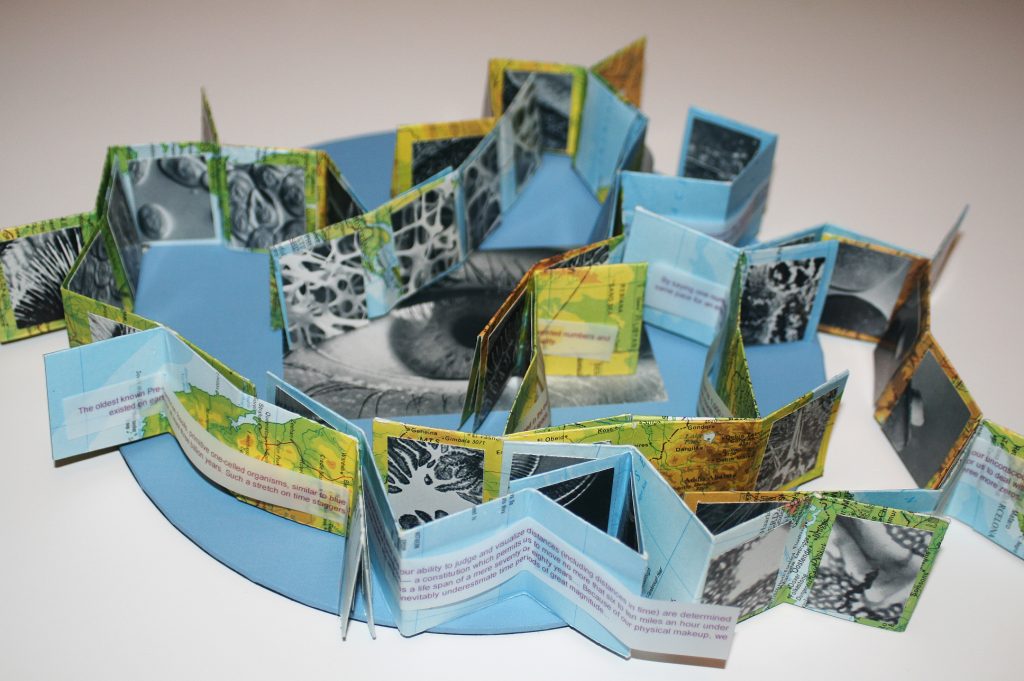

An atlas is a representation of the planet. We struggle constantly to capture the planet in a form we can understand. In this work I attempt to convey the difficulty in representing our world through the complexity of the circling structure which has no beginning or end. The work includes atlas pages from a Jacaranda World Atlas, images from The Miracle of Life by Dr Heinz Woltereck, text extract from Children of the Universe by Hoimar von Ditfurth.
Stabat Mater Ant Press 2009
Text: Latin Stabat Mater, English rewriting by Monica Oppen with Peter Lyssiotis
Hand printed intaglio and relief prints off photo polymer blocks, screenrprinting




With Australia involved in wars in Iraq and Afghanistan the news from these zones has made newspaper headlines regularly. There is a focus on the soldiers and debate about the relevance of Australia’s participation but what grips me is the human cost. In all the numbers and arguments for and against it is easy to forget that these are people’s lives caught up in the mess. I guess I would say that this is the general mind zone from which Stabat Mater grew.
The specific beginning of this book was attending a concert by the Australian Brandenburg Orchestra. I like Baroque music which was high fashion in the 16th and 17th centuries, so very much in the past. But at this concert they played a new composition by Marco Rosano a current Italian composer, written in Baroque style to an anonymous medieval text known as Stabat Mater, the name coming from the first line of the song/chant ‘Stabat Mater dolorosa’ — ‘Mother standing grieving’. It is a deeply emotive text focusing on the Virgin Mary weeping at the foot of the cross, asking her if we can join her and feel her suffering and therefore gain access to heaven. Somehow it was this deep request to connect with Mary’s suffering combined with the timelessness of 800 years coming together in this moment that made me think that perhaps all mothers who lost their sons in conflict, in political dissent would be grieving as Mary grieved. In my work the Latin text begins the book but the English is not a translation but a re-writing following the form and structure of the Latin. The end of the piece diverges most significantly from the original. Instead of it being a request for Mary’s intercession to eternal salvation it is a call to the reader to take a stand for peace, which will be ongoing.
The music is the complete score of Marco Rosano’s music, which was important to include because it was the starting point and also so the reader is aware that this text is a song.
The River Ant Press / Masterthief 2009
Text: Peter Lyssiotis
Photographs by Monica Oppen
Printed and wire comb bound by Wysiwyg Digital Printing
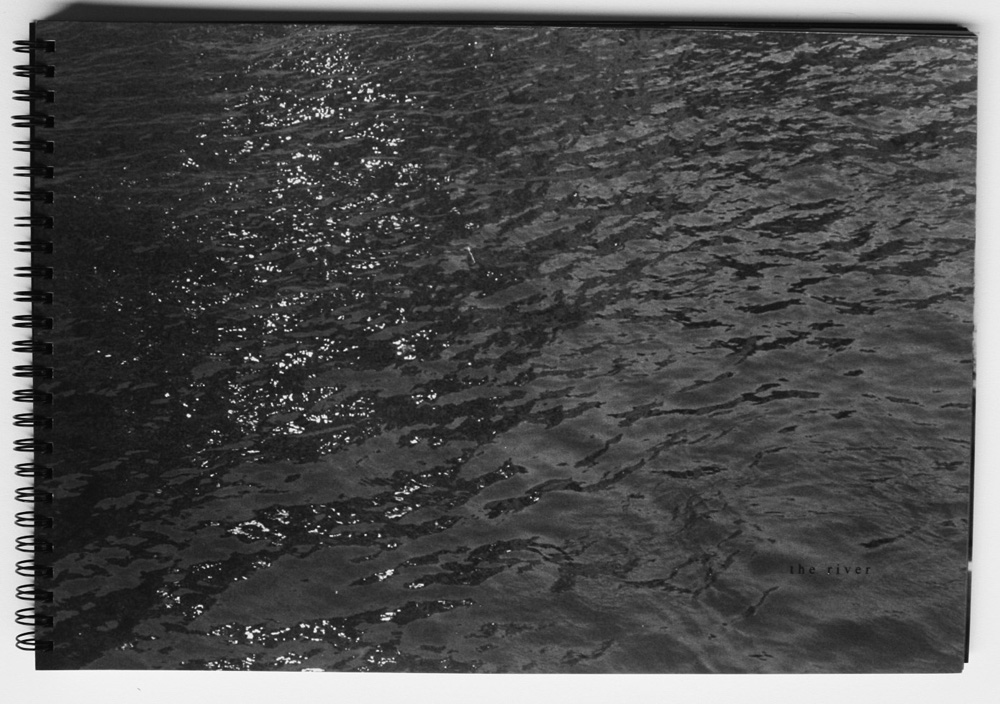

When the Hungarian photographer, Gyula Halasz Brassai walked the streets of Paris the camera was a relatively new invention; not everyone had one in their pocket. The book he produced Paris By Night has become one of the early iconic portraits of the city. Since then the photographic image risen to swamp newspapers, magazines, books, billboards… Now Paris is photographed a hundred thousand times a day, the monuments of the city immortalised in dead clichés. We walked past those monuments which have been drummed into us as the quintessential Paris. Was it possible to take a different photograph? In The River we try to capture another unidentifiable Paris. An evening in a city, a flow of people, a flow of water. This city bereft of the clichés, the postcard monuments, can become any city.
The spiral binding was chosen because the first edition of Paris By Night was also spiral bound.
Seven Rooms Ant Press / Masterthief 2007
Monica Oppen/Peter Lyssiotis
Text by Monica Oppen
Photomontages by Peter Lyssiotis
Printed by Redwood Prints, Ringwood, Vic
Binding by Monica Oppen
Box by Daphne Lera


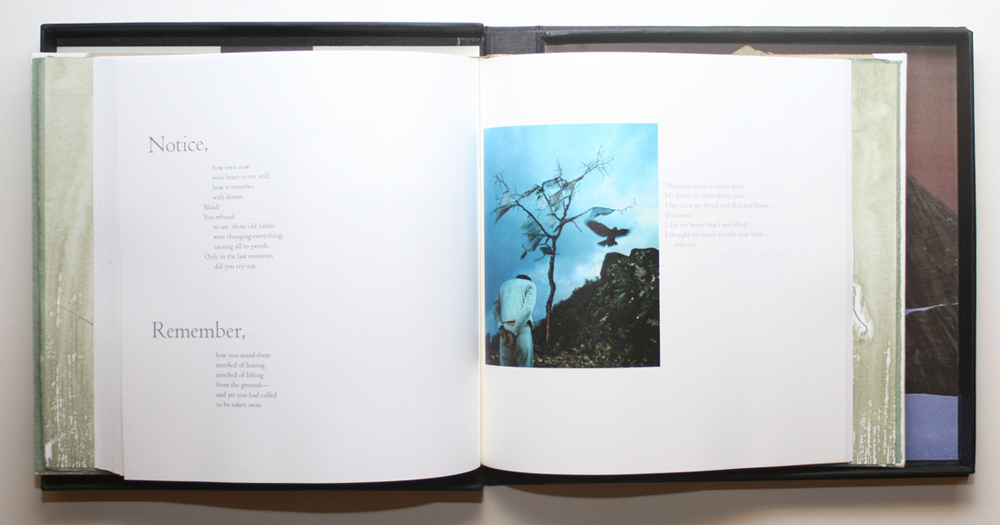
Seven Rooms is a narrative poem in seven parts. The rhythm, form and length of the work was given by an intuitive flow rather than formed to fit any preconceived format or genre. The narrative occurs because time passes. The place it occurs in is not a real place but of the subconscious mind, which does not need the logic, three dimensional solidity and consistency of the real world. Initially I saw this subconscious place as a house.
The subject of the work is change and transformation; personal and social transformation. The possibility muted is that when the individual changes society can change. The individual, the girl in this narrative, is essentially reduced to nothing but there is no death only a clearing for another beginning.
How to Spot a Terrorist Ant Press 2007
Photocopy production
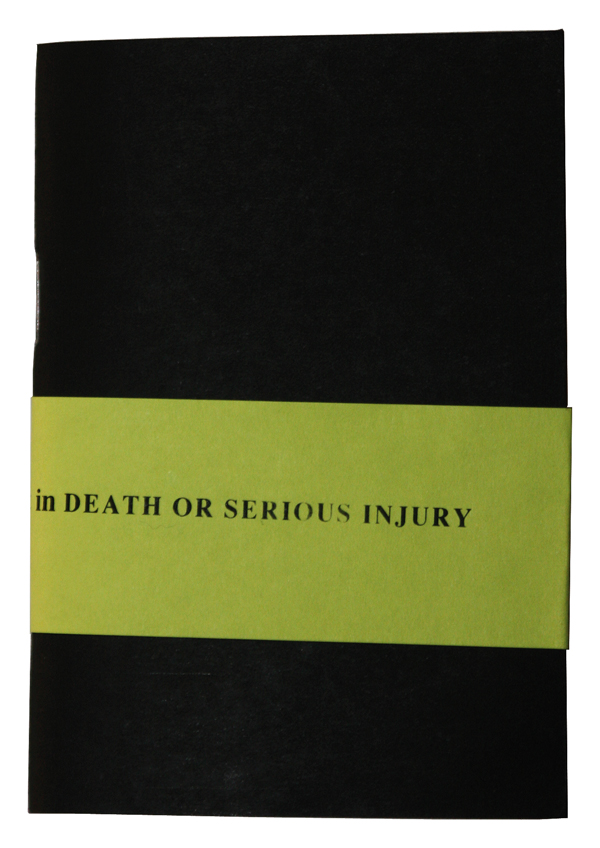

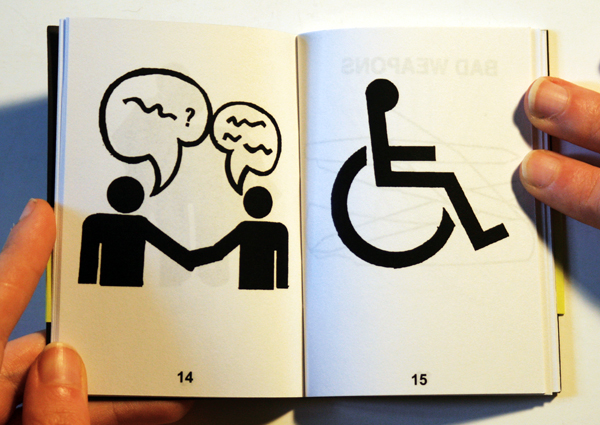
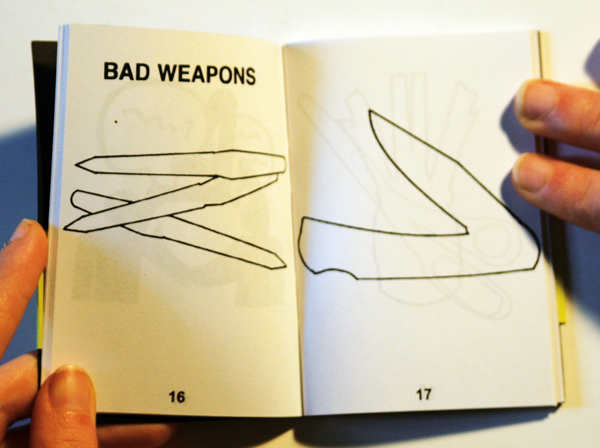

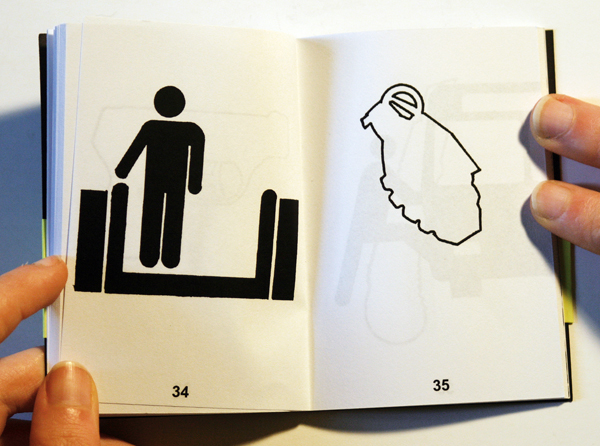

This pocket sized book was produced in response to the Howard Government’s ‘War on terror’ booklet which was distributed to every Australian household in the mid 2000s. The Government brochure asked us to report any suspicious terrorist-like behaviour of our neighbours. It was based around heavily stereotyped concepts who these terrorists might be. But what did a real terrorist might look like? My answer was a ‘citizen with a weapon’. To avoid sterotyping I copied neutral signage graphics of figures which are commonplace in our environment. Weapons are depicted in outline.
This booklet was exhibited and sold at low cost at the exhibition Lessons in History at Grahames Galleries in Brisbane in 2007.
